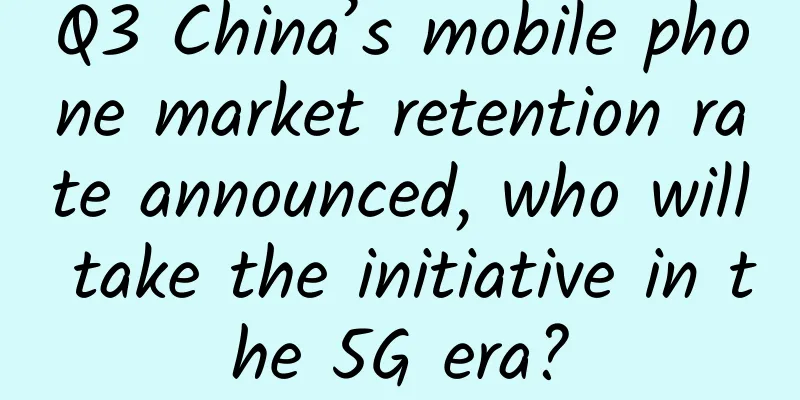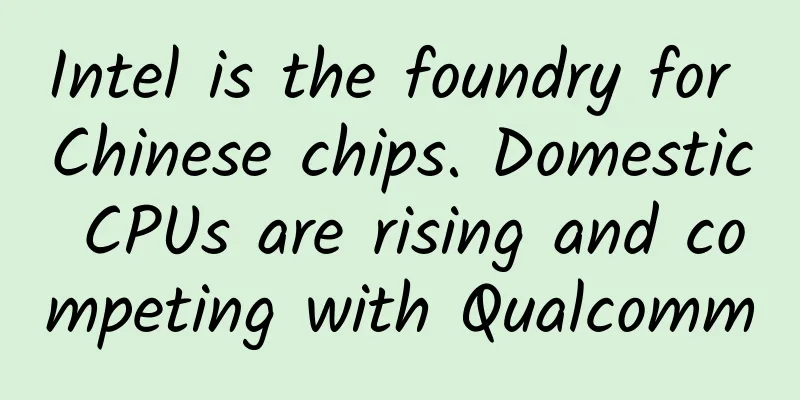Q3 China’s mobile phone market retention rate announced, who will take the initiative in the 5G era?

|
On November 18, mobile big data service provider Aurora released the "2019 Q3 Smartphone Market Insight Report" (hereinafter referred to as the Report). The report shows that from the distribution of domestic smartphone ownership rate (proportion of existing users) in Q3 2019, the domestic mobile phone market is dominated by five major mobile phone manufacturers. Reflected in sales, except for Apple, the sales rankings of the other four mobile phone manufacturers also remain in the same order. For mobile phone manufacturers, it is not enough to just take the lead in pursuing the new 5G technology. They also need strong technology and innovation capabilities as well as a strong user base. For the mature mobile phone consumer market, brand favorability is also extremely important. The first time should always be given to the most beloved people. The size of the existing user base plays a decisive role in the continuation of the advantages of mobile phone manufacturers in the 5G era. It can be said that the report provides us with an objective perspective on the future competitive landscape of the mobile phone market through a comparative analysis of the brand retention rates, changing trends and sales volumes of various brands in the Chinese mobile phone market. Huawei and Honor rank first in market share ranking In layman's terms, the retention rate is the ratio of the number of users who meet the effective user conditions to the actual number of users generated in a unit of time, that is, the proportion of existing users, which is the market share accumulated over many years. For mobile phone retention rates, the retention rate of a certain mobile phone manufacturer includes all models of the manufacturer, reflecting the actual usage situation on the market. The report data shows that the domestic mobile phone market is dominated by five major mobile phone manufacturers. Huawei and Honor mobile phones have a combined ownership rate of 28.7%, nearly 10 percentage points higher than the second-place Apple; OPPO and vivo have ownership rates of 17.3% and 16.7% respectively; Xiaomi has a ownership rate of 9%. Figure: Q3 domestic mobile phone ownership ranking The market's recognition of the brand strategy is directly reflected in the sales figures. From the distribution of domestic smartphone sales in Q3 2019, Huawei and Honor ranked first in sales share, accounting for 32.2%; vivo, OPPO, and Xiaomi ranked second, third, and fourth, accounting for 24.4%, 21.4%, and 10.6% respectively; iPhone ranked fifth in sales share, accounting for only 7.4%. Figure: Q3 domestic mobile phone sales Judging from the recent Double 11 mobile phone sales rankings, it is basically consistent with the brand retention rate in Jiguang data. Judging from the mobile phone sales on JD.com on Double 11, Huawei and Honor still dominate the list, while Apple has achieved good results by relying on the low-price discount strategy of iPhone 11. On the daily list of single product sales, 8 of the top 10 single product mobile phones were Honor phones, and the iPhone 11 and iPhone 11 Pro ranked 4th and 10th respectively. Figure: JD.com’s single product sales rankings on Double Eleven Surprisingly, iPhone 11 ranks first in the cumulative list of single-product mobile phones, and is far ahead among high-end phones. Figure: JD.com’s Double 11 single product cumulative list In the brand sales ranking of the day, Honor, Huawei and Apple ranked in the top three, followed by Xiaomi, vivo and OPPO. Figure: JD.com’s brand list on Double Eleven In general, the retention rate data can reflect the loyalty of a brand's users, which is very obvious in sales. Although Apple does not have the support of new technologies such as 5G, as long as the price is low enough, it still shows great appeal. There are many factors that affect the retention rate, which is the long-term accumulation of the manufacturer's comprehensive strength in products, technologies, etc. As a benchmark in the mobile phone industry, Apple was once a leader in the field of smartphones, leaving a good brand image in the minds of consumers. However, its high-end product positioning has gradually been impacted by domestic brands. Against the backdrop of the continuous improvement of the performance and experience of domestic Android phones, Apple's absolute dominance is constantly eroding. Apple's lack of innovation and high prices have caused its retention rate and sales to continue to decline. Domestic brands have developed rapidly in recent years, occupying an absolute advantage in the mid- and low-end markets, and constantly challenging Apple and Samsung in the high-end market. Huawei and Honor continue to grow and become the mobile phone manufacturers with the largest retention rate, mainly due to the leading technology of Huawei and Honor. As a company that started with hardware, Huawei has strong technical capabilities, including software and hardware. Take the consumer boom of mobile phones in recent years as an example. Whether it is fast charging, full screen, independent chips, folding screen, or 5G, IoT, AI and other technologies or concepts, Huawei can always keep up with the trend. In addition, the changing trend of retention rate reflects the subtle competitive landscape among various mobile phone brands. According to the Q3 2019 mainstream mobile phone ownership rate trend chart, Huawei and Honor still maintained the overall growth trend, and the upward trend was stable. Huawei's mobile phone ownership rate increased by 3.8% compared with January, ranking first in terms of growth; Honor's mobile phone ownership rate increased by 0.8% compared with January, ranking second in terms of growth. Vivo (including iQOO)'s ownership rate increased by 0.4% compared with January, ranking third in terms of growth. Both the retention rate and growth trend rank first, reflecting that Huawei not only has an absolute advantage in existing users, but can also gain the favor of more consumers. Apple's market share in China continued to decline in 2019, down 0.6% from January; OPPO (including realme) and Xiaomi (including redmi)'s market share fell 0.9% and 1.0% quarter-on-quarter (compared to June). Figure: Trends in mobile phone ownership in Q3 The reason behind the increasing and decreasing retention rates of various brands in the Chinese mobile phone market is the switch from 4G to 5G, and it is also a forward-looking battle for mobile phone brands facing the future. How to tap into new users and retain existing users is also a big test for mobile phone manufacturers, but it also means a huge opportunity. 5G may not overturn the current competitive landscape, but it will be a stepping stone for the next competitive period and a re-competition for existing users. The decisive battle in the 5G era is a fight for existing users On June 6, 2019, the Ministry of Industry and Information Technology officially issued 5G commercial licenses to China Telecom, China Mobile, China Unicom, and China Broadcasting Corporation, marking the first year of 5G commercial use in China. On August 12, China Telecom decided to be the first to release 5G dedicated number segments in Beijing in September, and existing users do not need to change cards or numbers to upgrade to 5G. On October 31, 2019, the three major operators announced 5G commercial packages and officially launched 5G commercial packages on November 1, marking China's official entry into the 5G commercial era. At present, major mobile phone brands have launched 5G mobile phones one after another, but there is still not much choice and the prices of mobile phones are still relatively high. Except for Huawei Mate X, which is priced at 16,999 yuan, the prices of other domestically produced 5G mobile phones on sale are basically in the range of 4,000 to 6,000 yuan. The current high price is still the main factor restricting consumers from purchasing. According to the price and sales distribution data, although the 5G mobile phones currently on the market are positioned as flagships, they have made a more detailed division of the "flagship" positioning, with a wide range of prices from US$450 to over US$700. Xiaomi, ZTE, and China Mobile focus on "volume flagship" models, while Samsung and Huawei focus on "high-end flagships". Vivo has two models in total, so it has both. Figure: Q3 China 5G mobile phone price and sales distribution The "September 2019 Domestic Mobile Phone Market Operation Analysis Report" released by the China Academy of Information and Communications Technology shows that in the first nine months of 2019, the total shipments of the domestic mobile phone market were 287 million units, including 11.946 million 2G mobile phones, 58,000 3G mobile phones, 275 million 4G mobile phones, and 787,000 5G mobile phones. 5G mobile phones are still in a low-volume sales situation, but facing the mobile phone market with annual sales of hundreds of millions of units, the potential of the existing market is unlimited in the large-scale 5G replacement wave. Combined with the above analysis of the retention rate of mobile phone manufacturers, we can draw the following conclusion: the competition in the future 5G market will still be a fight for existing users. Here, we can see the advantages of Huawei and Honor in the 5G competition. Huawei and Honor's high investment in technology has brought many world-leading self-developed technologies. The rich technology reserves can not only resist the risks generated by the external business environment, but also transfer flagship technologies to products in other price segments, making products in all price segments absolutely competitive. It is understood that the Huawei Mate 30 series 5G version officially ushered in its first sale on November 1. The sales charts released by e-commerce platforms such as JD.com, Tmall, and Suning show that the Huawei Mate 30 series 5G version won the double crown of sales volume and sales revenue on the first day of its sale on the three major e-commerce platforms. For many days thereafter, the two 5G versions of Huawei's Mate30 series continued to lead the JD mobile phone rankings, the daily and cumulative sales rankings of 5G mobile phones. On November 15, the Huawei Mate X went on sale for 16,999 yuan, and was sold out in just one minute. Currently, the third-party speculative prices for this phone are all around 20,000 yuan higher than the original price, and the highest price is even around 100,000 yuan. The hot sales of Huawei's 5G mobile phones prove that Huawei's products have been recognized by users. Next, as long as the technology is transferred to products of other price ranges, including Huawei and Honor dual brands, and the mutual complementation of their respective target groups and channels, in the upcoming 5G competition, Huawei and Honor's first retention rate and leading technology will be a very advantageous starting point. In addition, the changes brought by 5G are different from 4G. It is no longer just a technical competition, but a comprehensive application that will be integrated into the scene. At the same time, a high market retention rate and a complete ecosystem are the key points for future competition among manufacturers. Among these leading manufacturers, the ecological advantages of Huawei, Honor, Apple, Xiaomi, etc. will also run through to the next round of competition. Conclusion The future competition in the mobile phone market will largely be a competition for 5G. In addition to technology and products, it will also be affected by factors such as retention rate, brand awareness, brand strategy, and user inertia. Although many brands are accelerating adjustments as the new trend of 5G arrives, hoping to seize the opportunity before 5G is fully popularized, the 5G market is still a place to be explored and a battle for the existing market. If manufacturers with accumulated users and technical reserves can deeply understand the needs of the user group, not pursue gimmicks, and launch mature products, then the future will belong to them. Apple has such potential, and so do Huawei and Honor. |
>>: Alipay launches a wave of new features: it is completely indispensable
Recommend
Why are the results of my bidding promotion getting worse and worse?
Question: I am the manager of online marketing fo...
Blood is red, why are veins blue?
In Europe, "blue blood" was once a symb...
Northerners will never understand the pain of the return of the south wind!
(The above pictures are all from the Internet)...
【Android】Implement the auto-complete function for search
Source code introduction Using Sqlite fuzzy query...
What is the use of Kuaishou Blue V certification? Will traffic increase?
For Kuaishou sellers, they certainly hope to oper...
Unexpectedly! This place on earth is the best place to see the stars
"Sitting on the ground, I can travel eighty ...
Stop buying blindly! Regarding "Double Eleven", check this reminder quickly →
Recently, the Beijing Municipal Administration fo...
iOS componentization exploration: creation of private libraries
iOS componentization is basically based on cocoap...
5 steps, 3 positionings: Do a good job in social marketing that is not inferior to Durex! (Attached with PPT download)
In the current market environment full of "m...
What is the "Sky Eye" looking at? Could it have received alien signals?
Guizhou Sky Eye is the nickname of the 500-meter ...
Alcoholics spend their lives in a bottle, not knowing it is a disease
Alcohol addiction has always been considered a mo...
Can a crocodile wake up after being frozen into a popsicle? I advise you not to touch the frozen crocodile's nose!
Not long ago, a short video went viral. In the vi...
500 kinds of homepage designs for event operation and promotion!
1. What are operational activities? Starting from...
Super strategy for operation and promotion of the new version of APP in 2016!
In 2016, mobile Internet startup products face mo...
3 reasons and solutions for the current low app opening rate
The open rate is a KPI indicator that all operati...









